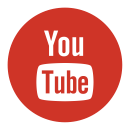Introduction to Programming Using HTML and CSS

In today’s, digital word Programming has become an essential skill. As more and more businesses and individuals rely on the Internet to reach their target audience, the need for web development has grown rapidly. HTML and CSS are two of the most fundamental languages in web development, making them a great starting point for anyone interested in learning to program. Our today’s topic is Introduction to Programming Using HTML and CSS, here you will get a nice idea of Html and CSS.
What are Html and CSS?
The full form of HTML is Hypertext Markup Language, it is the standard language used to create web pages. It provides a basic structure for content, such as text, images, and links, and determines how the content is displayed on the web. On the other hand, CSS (Cascading Style Sheets) allows developers to add style and formatting to web pages. With CSS, you can adjust colors, fonts, and layouts to create visually appealing websites.
Learning HTML and CSS can seem intimidating, but it doesn’t have to be. There are many resources available to help beginners get started, including online tutorials, books, and courses. One of the best ways to learn this programming language is to practice on your own. By creating your own web pages and experimenting with different HTML tags and CSS properties, you can gain a deeper understanding of how these languages work.
Programming Fundamentals and Basics
The process of writing code to instruct a computer to perform specific tasks is Programming. Every programming language has its own syntax and unique features, but the fundamental concepts that underlie programming are common to all languages. Now, we will take a deep dive into the Programming Fundamentals and Basics that are essential for understanding how to write efficient and effective code.
i. Data Types
Data types refer to the different types of data that can be stored and manipulated by a program. Understanding data types is crucial for ensuring that your program is handling data correctly and efficiently. There are many different types of data types, including:
- Integers: Used to store whole numbers.
- Floating-Point Numbers: Used to store decimal values.
- Characters: Used to store individual characters, such as letters or symbols.
- Strings: Strings are used to store a sequence of characters.
ii. Variables
Variables are like containers that are used to store data in the program. They allow you to store and manipulate data, which can be used later in the program. Variables can be assigned values, and the value of a variable can change throughout the program’s execution.
iii. Operators
Symbols are known as Operators in programming that are used to perform operations on data. Common operators include arithmetic operators (+, -, *, /), comparison operators (==, !=, >, <), and logical operators (&&, ||). Understanding operators is essential for performing calculations and comparisons in your code.
iv. Control Structures
Control structures are used to control the flow of a program’s execution. This includes conditional statements (if/else), loops (for, while), and switch statements. Control structures allow you to make decisions and repeat actions based on conditions or user input.
v. Functions
Functions are blocks of code that can be reused throughout a program. They allow you to write code once and use it multiple times, making your code more efficient and organized. Functions can take inputs (parameters) and return outputs, allowing you to perform complex operations in your code.
vi. Algorithms
Algorithms are sets of instructions used to solve problems. They provide a step-by-step approach to solving a problem and are essential for creating efficient and effective code. Understanding algorithms is crucial for developing programs that can solve real-world problems.
Programming fundamentals and basics are essential for understanding any programming language. By mastering these concepts, you can write efficient and effective code that can solve real-world problems. It is important to start with the basics and build a strong foundation before moving on to more advanced topics. With a good understanding of programming fundamentals and basics, you can become a proficient programmer and develop software applications that can change the world.
Introduction to HTML and its Syntax: An Overview
HTML stands for Hypertext Markup Language. It is the standard markup language used to create web pages. HTML provides a way to structure content and add elements to a webpage, such as text, images, videos, and links. Now, we will take a deep dive into the Introduction to HTML and its Syntax.
i. HTML Structure
HTML is composed of elements, which are enclosed within tags. The basic structure of an HTML document includes a doctype declaration, HTML tags, head tags, and body tags. Here is an example of a basic HTML structure:
<!DOCTYPE html>
<html>
<head>
<title>Page Title</title>
</head>
<body>
<h1>My First Heading</h1>
<p>My first paragraph.</p>
</body>
</html>ii. HTML Tags
HTML tags are used to define different elements on a web page. Tags are enclosed in angle brackets (< >) and usually come in pairs, with a start tag and an end tag. The start tag contains the element name, and the end tag contains a forward slash (/) before the element name. Here is an example of an HTML tag:
<h1>My First Heading</h1>In this example, the h1 tag is used to define a level one heading.
iii. HTML Attributes
HTML attributes provide additional information about an element. They are used to modify the behavior or appearance of an element. Attributes are included in the opening tag of an element and are composed of a name and a value, separated by an equals sign (=). Here is an example of an HTML attribute:
<img src="example.jpg" alt="Example Image">In this example, the src attribute is used to specify the location of the image file, and the alt attribute provides alternate text for the image.
iv. HTML Elements
HTML elements are the building blocks of an HTML page. They are used to define the structure and content of a webpage. There are many different types of HTML elements, including headings, paragraphs, lists, images, links, and tables. Here is an example of an HTML element:
<p>My first paragraph.</p>In this example, the p element is used to define a paragraph.
v. HTML Comments
In HTML code comments are used to add notes to your code. They are not displayed on the webpage but can be used to document your code or temporarily remove code from the page. HTML comments are enclosed in <!– –> tags. An example of an HTML comment is given below:
<!-- This is a comment -->In summary, HTML is the backbone of the web. Understanding the basics of HTML and its syntax is essential for creating web pages that are well-structured and easy to read. With the knowledge gained from this article, you can start creating your own web pages and enhance your web development skills.
Cascading Style Sheets (CSS) and their syntax
CSS stands for Cascading Style Sheets. It is well-known as a stylesheet language that is used to narrate or design the presentation of a document written in HTML or XML. CSS provides a way to separate the presentation of a document from its content, making it easier to manage and modify the design of a website. Now, we will take a deep dive into Cascading Style Sheets (CSS) and its Syntax.
i. CSS Structure
CSS is composed of rules, which are made up of selectors and declarations. The selector points to the HTML element that you want to style, and the declaration specifies how you want to style it. Let’s see an example of a CSS rule:
h1 {
color: red;
font-size: 24px;
}In this example, h1 is the selector, and the color: red; and font-size: 24px; are the declarations.
ii. CSS Selectors
CSS selectors are used to target HTML elements that you want to style. There are many different types of selectors in CSS including element selectors, ID selectors, and class selectors. Let’s see some examples of a CSS selector:
h1 {
color: red;
}In this example, the h1 selector targets all level-one headings on the page.
iii. CSS Declarations
CSS declarations are used to specify the style of an HTML element. Declarations are structured of a property and a value that is separated by a colon (:). Let’s see an example of a CSS declaration:
h1 {
color: green;
}In this example, the property is color, and green is the value. This declaration sets the color of all level-one headings to red.
iv. CSS Box Model
The CSS Box Model is a way to describe the layout of an HTML element. It builds with four parts: content, padding, border, and margin. Let’s see an example of a CSS Box Model:
div {
width: 200px;
height: 200px;
padding: 20px;
border: 1px solid black;
margin: 20px;
}In this example, the div element has a width and height of 200 pixels, 20 pixels of padding, a 1-pixel black border, and 20 pixels of margin.
v. CSS Units
To specify measurements for CSS properties are used CSS Units. There are many different types of CSS units, including pixels, ems, and percentages. Here is an example of a CSS declaration that uses units:
h1 {
font-size: 24px;
line-height: 1.5em;
}In this example, font size is specified in pixels, and line height is specified in ems.
In Summary, for web design CSS is an essential part. Understanding the basics of CSS and its syntax is essential for creating websites that are well-designed and easy to read. With the knowledge gained from this article, you can start creating your own CSS styles and enhance your web development skills.
Web Design Principles and Best Practices
Web design principles and best practices are important for creating websites that are visually appealing, user-friendly, and accessible. In this part, we will take a deep dive into web design principles and best practices.
i. Design for the User
The most important principle in web design is to design for the user. This means that your website should be easy to navigate, easy to read, and visually appealing. You should also consider the needs and preferences of your target audience when designing your website.
ii. Keep it Simple
Simple design is often the best design. Keeping your website design simple and uncluttered makes it easier for users to find what they are looking for and to navigate your website. Use a minimal color palette and a limited number of fonts to keep your website looking clean and professional.
iii. Use Responsive Design
In the present time, a maximum number of people access the internet on mobile devices, so it is important to use responsive design. Responsive design means that your website will adapt to the screen size of the device it is being viewed on, ensuring that your website looks great on any device.
iv. Use Consistent Navigation
Consistent navigation is important for making your website easy to use. Use the same navigation menu on every page of your website and place it in a prominent location. This will help users find quickly and easily what they are looking for.
v. Use High-Quality Images
High-quality images can help to make your website look more professional and engaging. Use images that are relevant to your content and that are high resolution. So, to ensure that they load quickly optimize your images for the web.
vi. Use Clear Calls to Action (CTAs)
Clear calls to action (CTAs) are important for guiding users toward the actions you want them to take on your website, such as filling out a contact form or making a purchase. Use clear and concise language for your CTAs and make them stand out on your website.
vii. Ensure Accessibility
Accessibility is important for ensuring that everyone can use your website, including those with disabilities. Use proper heading tags, and alt text for images, and ensure that your website can be navigated using only a keyboard. This will make your website more user-friendly and help you reach a larger audience.
In summary, Web design principles and best practices are important for creating websites that are user-friendly, accessible, and visually appealing. By following these principles, you can create a website that engages your audience and provides a positive user experience. Keep these best practices in mind when designing your website to ensure that it looks great, functions well, and meets the needs of your users.
Creating a Basic Web Page Using HTML and CSS
Creating a basic web page using HTML and CSS is a great way to start learning how to design and develop websites. In this part, we will go through the steps of creating a basic web page using HTML and CSS.
i. Set Up Your Environment
To start creating a web page, you need a text editor (like Notepad++, Sublime Text, Atom, Komodo Edit, Brackets, Bluefish, BBEdit, UltraEdit, CKEditor, etc) and a web browser (like Microsoft Edge, Chrome, Firefox, etc). You can use any text editor you like, such as Notepad++, Sublime Text, or Visual Studio Code. Now open your text editor and create a new file, then Save it with a “.html” extension.
ii. Create the HTML Structure
The first step in creating a web page is to create the HTML structure. HTML stands for Hypertext Markup Language, and it is the foundation of every web page. In your text editor, create the basic HTML structure by typing the following code:
<!DOCTYPE html>
<html>
<head>
<title>My Web Page</title>
</head>
<body>
</body>
</html>This code creates the basic structure of an HTML document, including the <!DOCTYPE html> declaration, the opening and closing html tags, the head and body sections, and the title of the web page.
iii. Add Content to Your Web Page
Now that you have created the basic structure of your web page, you can start adding content. Inside the body section, add the content you want to display on your web page, such as headings, paragraphs, images, and links. For example, you can add a heading and a paragraph like this:
<body>
<h1>Welcome to My Web Page</h1>
<p>This is my first web page that is created using HTML and CSS.</p>
</body>iv. Style Your Web Page with CSS
Once you have added content to your web page, you can style it using CSS. CSS stands for Cascading Style Sheets, and it is used to add visual style and layout to web pages. To style your web page, create a new file in your text editor and save it with a .css extension. Then link the CSS file to your HTML document by adding the following code inside the head section of your HTML document:
<head>
<title>My Web Page</title>
<link rel="stylesheet" type="text/css" href="style.css">
</head>This code links the CSS file to your HTML document. Inside the CSS file, you can add rules to style the elements on your web page. For example, you can change the font color and size of your heading and paragraph like this:
h1 {
color: blue;
font-size: 36px;
}
p {
color: black;
font-size: 18px;
}v. Preview Your Web Page
Finally, you can preview your web page in a web browser. Save the HTML and CSS files and open the HTML file in a web browser like Microsoft Edge, Chrome, Firefox, etc. You should see your web page with the content and styles you added.
In summary, Creating a basic web page using HTML and CSS is a great way to get started with web development. By following these steps, you can create a simple web page with text and images, and style it using CSS. Once you have mastered the basics, you can move on to more advanced web development techniques and create more complex web pages and applications.
Adding Multimedia Content to Web Pages
Adding multimedia content to web pages can make them more engaging and interactive. Multimedia content can include images, videos, audio files, and animations. In this section, we will go through the steps of adding multimedia content to web pages.
i. Add Images
Adding images to web pages is a great way to enhance the visual appeal of your content. To add an image to your web page, you need to use the “img” tag in HTML. Using the “img” tag in HTML requires two attributes: src and alt. Here src attribute specifies the URL of the image file or image URL, and the ALT tag contains the alternative text for an image attribute that provides a description of the image. For example-
<img src="image.jpg" alt="A beautiful sunset">ii. Add Videos
Adding videos to web pages can provide a more dynamic and engaging user experience. To add a video to your web page, you can use the video tag in HTML. The video tag requires several attributes, including src, width, and height. You can also add controls, such as play, pause, and volume controls, using the controls attribute. For example:
<video src="video.mp4" width="640" height="360" controls></video>iii. Add Audio Files
Adding audio files to web pages can provide a more immersive and interactive user experience. To add an audio file to your web page, you can use the audio tag in HTML. The audio tag requires several attributes, including src and controls. You can also add a caption or a transcript using the track tag. For example:
<audio src="audio.mp3" controls>
<track src="captions.vtt" kind="captions" label="English" default>
</audio>iv. Add Animations
Adding animations to web pages can make them more dynamic and interactive. There are several ways to add animations to web pages, including using CSS transitions and animations, JavaScript libraries, and animated GIFs. For example, you can create a simple animation using CSS like this:
<style>
.box {
width: 100px;
height: 100px;
background-color: red;
transition: width 2s;
}
.box:hover {
width: 200px;
}
</style>
<div class="box"></div>v. Optimize Multimedia Content
When adding multimedia content to web pages, it is important to optimize the files for web use. This can include compressing images and videos to reduce file size, using the appropriate file formats for different types of media, and hosting the files on a fast and reliable server. By optimizing multimedia content, you can improve the loading speed and performance of your web pages.
In summary, Adding multimedia content to web pages can enhance the user experience and make them more engaging and interactive. By following these steps, you can add images, videos, audio files, and animations to your web pages, and optimize them for web use. Remember to consider the accessibility and performance of your multimedia content, and use best practices to ensure that your web pages are accessible to all users.
Debugging and Troubleshooting Common Coding Errors in HTML and CSS
HTML and CSS are two of the most widely used languages for creating web pages. While they are relatively easy to learn, coding errors can occur, leading to issues with your web pages. In this section, we will discuss some common coding errors in HTML and CSS, and how to debug and troubleshoot them.
i. Common HTML Coding Errors
HTML coding errors can include missing tags, incorrect attributes, and invalid syntax. These errors can cause issues with the layout and functionality of your web pages. To debug HTML coding errors, you can use a web browser’s built-in developer tools. These tools allow you to inspect the HTML code, identify errors, and make changes in real time.
ii. Common CSS Coding Errors
CSS coding errors can include incorrect selectors, missing or incorrect property values, and invalid syntax. These errors can cause issues with the styling and layout of your web pages. To debug CSS coding errors, you can also use a web browser’s developer tools. These tools allow you to inspect the CSS code, identify errors, and make changes in real time.
iii. Validation Tools
Validation tools can also be useful for identifying and fixing coding errors in HTML and CSS. HTML validation tools check the HTML code for compliance with HTML standards and can identify errors such as missing tags, invalid syntax, and incorrect attribute values. CSS validation tools check the CSS code for compliance with CSS standards and can identify errors such as invalid selectors, incorrect property values, and missing or mismatched brackets.
iv. Tips for Troubleshooting
When troubleshooting coding errors in HTML and CSS, it is important to start with the basics, such as checking for typos and syntax errors. You can also try commenting out sections of code to isolate the issue or creating a minimal test case to reproduce the problem. It can also be helpful to seek out online resources, such as forums and communities, for advice and support.
v. Best Practices for Avoiding Coding Errors
To avoid coding errors in HTML and CSS, it is important to follow best practices and coding standards. This can include using a consistent coding style, commenting on your code to make it easier to understand and maintain, and testing your code thoroughly before deploying it to a live website. It is also important to keep up-to-date with the latest HTML and CSS standards and to use modern tools and frameworks that can help streamline your coding process.
Debugging and troubleshooting common coding errors in HTML and CSS can be a frustrating and time-consuming process. By using web browser developer tools, validation tools, and best practices for avoiding coding errors, you can identify and fix issues more efficiently. Remember to test your code thoroughly and seek out online resources for support when needed. By following these tips and best practices, you can create high-quality web pages that are both functional and visually appealing.
Also, read about How to make Jarvis with Dialogflow and Python.
Conclusion (Introduction to Programming Using HTML and CSS)
This is the Introduction to Programming Using HTML and CSS. HTML and CSS are two fundamental languages used for creating web pages. Understanding the basics of programming, syntax rules, and web design principles is essential for creating effective and engaging web pages. While coding errors can occur, using developer tools, validation tools, and best practices can help debug and troubleshoot those issues more efficiently. By following these tips and continuing to learn and stay up-to-date with the latest standards, anyone can create high-quality web pages that are both functional and visually appealing.





Leave a Reply